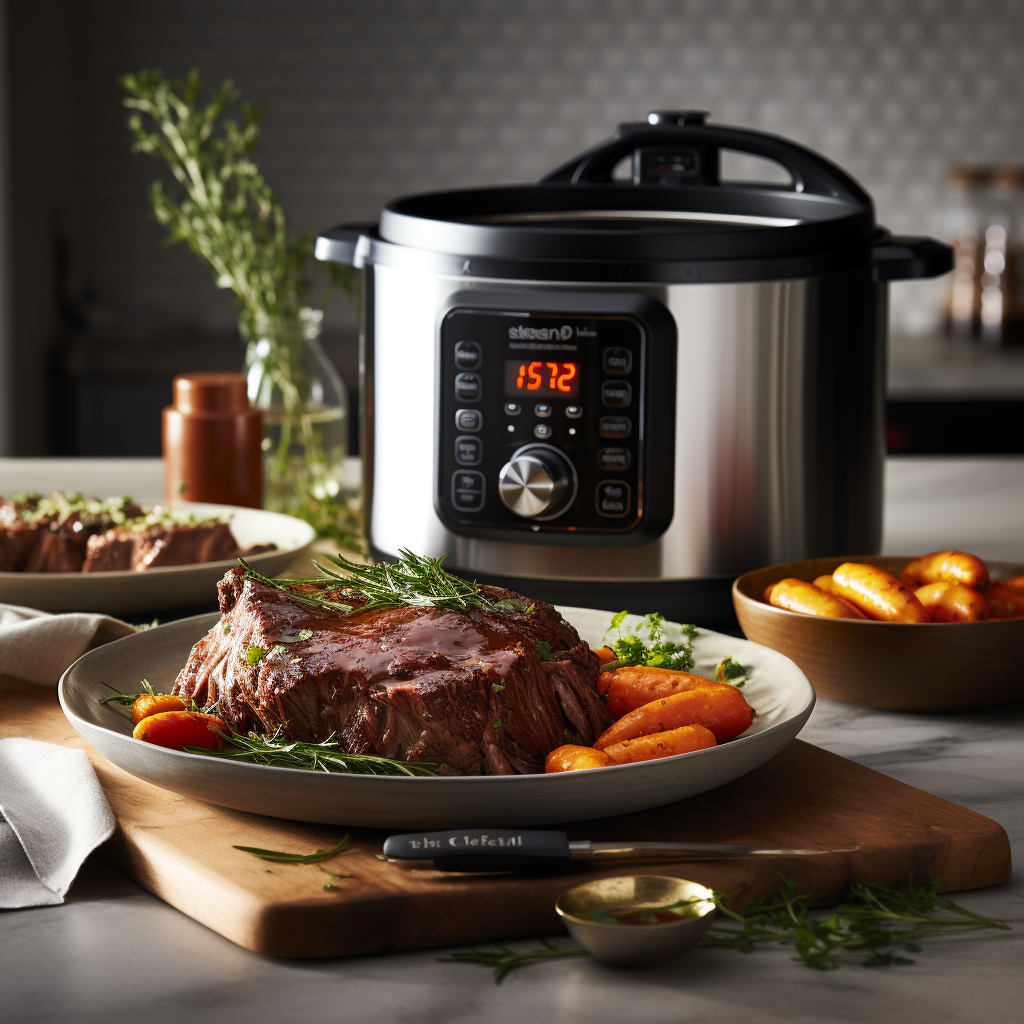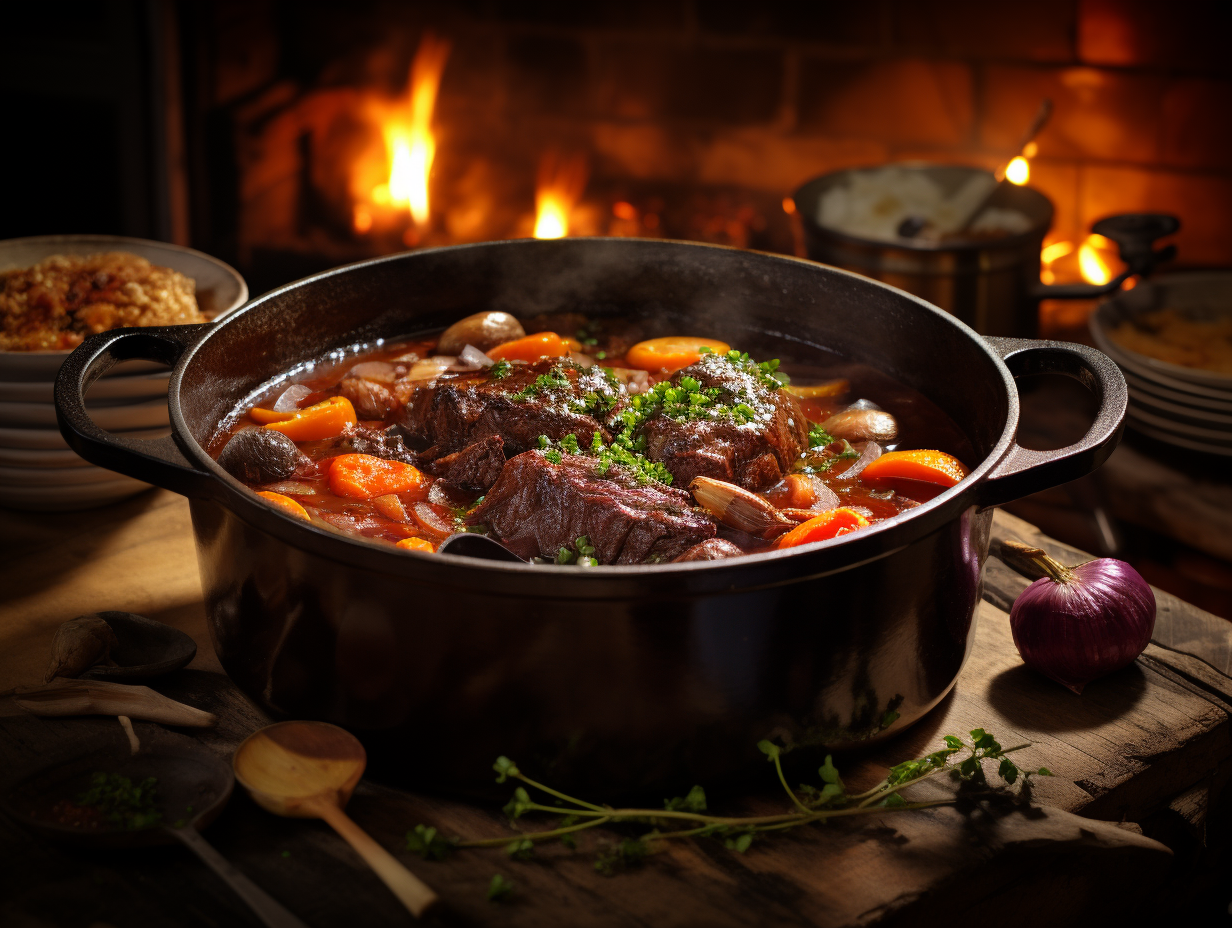Introduction to the Best Cooking Method for Beef Shanks
If you’re looking for the best cooking method for beef shanks, you’re not alone. Beef shanks, often overlooked because of their tough texture, can be transformed into tender, delicious dishes when cooked correctly. This flavorful cut of meat comes from the leg portion of the cow, which means it’s packed with connective tissue and collagen—elements that require special cooking techniques to break down. So, what’s the best way to cook beef shanks? In this article, we’ll explore several methods, including braising, slow cooking, pressure cooking, and sous vide, each with its own benefits and unique results.
By understanding these beef shank preparation methods, you can unlock the full potential of this underrated cut, creating rich, hearty dishes that are sure to impress. Whether you’re a home cook or a professional chef, mastering the right technique is key to making beef shanks melt-in-your-mouth tender and bursting with flavor.
The Anatomy of Beef Shanks: Why They Require Special Attention
Before diving into cooking methods, it’s essential to understand the anatomy of beef shanks and why they require specific techniques. Beef shanks are located in the lower part of the animal’s leg. As a working muscle, this area is full of connective tissue, tendons, and collagen, which means the meat is tough but flavorful.
The challenge with beef shanks is that they require long, slow cooking to break down the connective tissues, particularly the collagen. This process, known as gelatinization, is what transforms the meat from tough to tender, making it a favorite among chefs and home cooks for slow-cooked dishes.
Benefits of Cooking Beef Shanks
While beef shanks may require more time and effort, the results are more than worth it. Here’s why you should consider cooking beef shanks:
- Rich Flavor: The extended cooking time allows the collagen to break down, creating a deep, rich flavor.
- Tender Texture: Slow cooking methods turn this tough cut into a tender, melt-in-your-mouth delicacy.
- Affordable: Compared to other beef cuts like ribeye or tenderloin, beef shanks are an affordable option that can feed a family with ease.
- Versatile: Whether you prefer soups, stews, or braised dishes, beef shanks adapt to a variety of cuisines and flavors.
Common Cooking Methods for Beef Shanks
There are several methods to cook beef shanks, and each brings out different characteristics in the meat. Here, we’ll go through the most popular techniques, discussing their benefits, best practices, and ideal dishes.
1. Braising: The Gold Standard for Beef Shanks
Braising is, without a doubt, the most commonly used method for cooking beef shanks. It’s a two-step process that starts with searing the meat at high heat and then cooking it slowly in a liquid. The liquid can be anything from beef stock to wine or a mixture of both. The key to successful braising is maintaining a low, even temperature and ensuring the beef is completely submerged in the liquid to allow it to cook evenly.
Steps for Perfect Braising:
- Searing: Start by heating oil in a heavy-bottomed pot, like a Dutch oven, and searing the beef shanks on all sides until they develop a rich, brown crust. This step is crucial for locking in flavor and creating depth in the dish.
- Deglazing: After searing, remove the beef and deglaze the pan with wine or broth, scraping up any browned bits from the bottom of the pan. These bits add flavor to your sauce.
- Slow Cooking: Add the shanks back to the pot, cover them with liquid (stock, wine, or a combination), and add aromatics like onions, garlic, and herbs. Cover the pot and let it simmer on low heat for 2-3 hours until the meat is fall-apart tender.
Best Braising Dishes:
- Osso Buco: A classic Italian dish made by braising veal or beef shanks in a flavorful broth of wine and aromatics. The marrow inside the bones adds a luxurious texture to the dish.
- Braised Beef Shank with Red Wine Sauce: A more rustic approach where beef shanks are slowly cooked in a rich red wine sauce until tender.
For more ideas on slow-cooking beef, check out this Ultimate Chuck Roast Beef Recipe.
2. Slow Cooking: Hands-Off but Delicious
For those who prefer a more hands-off approach, slow cooking is an excellent alternative to braising. With a slow cooker, you can “set it and forget it,” leaving the beef shanks to cook low and slow for several hours. The result is tender meat that falls off the bone without requiring constant supervision.

How to Slow Cook Beef Shanks:
- Preparation: Start by searing the shanks in a pan to develop a crust, similar to braising. Then, transfer the beef to the slow cooker.
- Add Ingredients: Add broth, wine, and vegetables like carrots, onions, and celery. Season with salt, pepper, and herbs such as thyme and rosemary.
- Cook Low and Slow: Set the slow cooker on low and let it cook for 6-8 hours. The long cooking time allows the collagen in the beef to break down, making the meat incredibly tender.
Recommended Slow Cooking Dishes:
- Beef Shank Stew: A hearty stew made with beef shanks, root vegetables, and herbs. Slow cooking ensures the meat becomes tender and flavorful.
- Beef Shank Pot Pie: Slow-cooked beef shanks combined with vegetables and encased in a flaky pie crust.
Linking opportunity: Beef Pot Pie Recipe.
3. Pressure Cooking: Fast, But Full of Flavor
If you’re pressed for time but still want to enjoy tender beef shanks, pressure cooking is a game-changer. Using a pressure cooker or an Instant Pot, you can significantly reduce the cooking time without sacrificing tenderness or flavor. Pressure cooking traps steam inside the pot, raising the internal temperature and cooking food quickly while breaking down tough connective tissues.

Steps for Pressure Cooking Beef Shanks:
- Sear First: As with braising and slow cooking, start by searing the beef shanks to develop flavor.
- Pressure Cook: Add the shanks to the pressure cooker along with broth, wine, and aromatics. Seal the lid and cook on high pressure for 45-60 minutes.
- Natural Release: Allow the pressure to release naturally for about 10 minutes before opening the lid.
Dishes for Pressure Cooking:
- Instant Pot Osso Buco: A quick version of the classic osso buco that retains all the richness and depth of flavor but cooks in less than an hour.
- Pressure-Cooked Beef Shank Soup: A hearty soup that comes together quickly, thanks to the power of the pressure cooker.
For more information on slow-cooked dishes, visit How to Cook the Perfect Chuck Roast.
4. Sous Vide: Precision Cooking for Tender Results
Sous vide cooking is a method that involves vacuum-sealing the beef shanks and cooking them in a water bath at a precise temperature for an extended period. While it requires specialized equipment, sous vide is becoming increasingly popular due to the perfect results it can achieve. Sous vide allows you to cook beef shanks evenly, ensuring that they remain juicy and tender throughout.

How to Cook Beef Shanks Using Sous Vide:
- Season and Seal: Season the beef shanks with salt, pepper, and your favorite herbs. Vacuum-seal them in a bag with a little olive oil or butter.
- Water Bath: Set the sous vide machine to 160°F (71°C) and cook the shanks for 24-48 hours. The long cooking time breaks down the connective tissue without drying out the meat.
- Sear: After cooking, quickly sear the beef shanks in a hot pan to develop a crust.
Popular Sous Vide Dishes:
- Sous Vide Beef Shank with Garlic and Rosemary: A simple, flavorful dish where the slow, controlled cooking method ensures even tenderness.
- Sous Vide Osso Buco: A modern twist on the traditional Italian dish, offering perfect texture every time.
Ingredients that Complement Beef Shanks
Regardless of the cooking method, the ingredients you use can enhance the flavor of beef shanks. Here’s a list of commonly used ingredients and why they work well:
1. Broth or Stock
Beef or chicken stock is the most common liquid used for braising and slow cooking. The rich flavors of the stock enhance the taste of the beef while keeping it moist during the long cooking process.
2. Wine
Red wine, especially in braising, adds depth and complexity to the dish. The acidity of the wine helps balance the richness of the beef, while the alcohol evaporates, leaving behind concentrated flavors.
3. Aromatics
Garlic, onions, and leeks are essential for building layers of flavor. Sauté them at the beginning of the cooking process to release their natural oils and infuse the dish with aroma.
For more beef-related recipes, you can explore this Shaved Beef Recipe.
4. Herbs
Thyme, rosemary, and bay leaves are commonly used in beef shank dishes. These herbs provide an earthy, aromatic quality that complements the richness of the meat.
Serving Suggestions for Beef Shanks
Once you’ve mastered the art of cooking beef shanks, the next step is serving them in a way that highlights their flavor and texture. Here are some ideas for pairing and serving:
1. Over Mashed Potatoes
Mashed potatoes are the perfect side dish for beef shanks. Their creamy texture complements the rich, tender meat, and they soak up the flavorful braising liquid or sauce.
Linking opportunity: Mashed Potatoes Gravy Recipe.
2. With Polenta
Polenta is another great option. Its smooth, creamy texture is a lovely contrast to the heartiness of beef shanks, and it can be flavored with cheese or herbs for an extra boost of flavor.
3. In Tacos or Burritos
Shredded beef shank is a delicious filling for tacos or burritos. Add your favorite toppings, such as avocado, salsa, and cilantro, to create a flavorful handheld meal.
Conclusion
When it comes to beef shanks, the key to unlocking their full potential is choosing the right cooking method. Whether you prefer the time-honored technique of braising, the convenience of a slow cooker, the speed of a pressure cooker, or the precision of sous vide, each method offers unique benefits that make beef shanks a worthy addition to your cooking repertoire.
For tender, flavorful beef shanks, braising remains the most popular and reliable method. However, if you’re short on time, pressure cooking can give you similar results in a fraction of the time. For a hands-off approach, slow cooking is ideal, while sous vide offers perfect precision and consistency.
No matter which method you choose, beef shanks are sure to impress with their rich flavor and melt-in-your-mouth tenderness.

